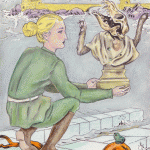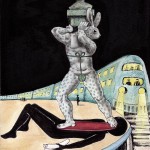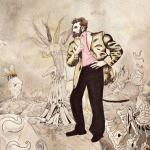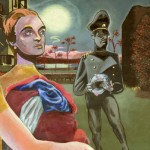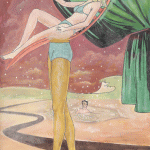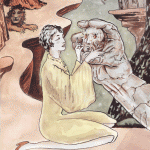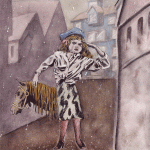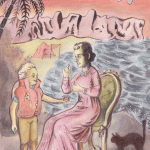Artist´s book release [2015]
BARBARER SIMULERAR SAMSPRÅK

(Barbarians simulating conversation)Publisher: Styx förlag. Format: 210 x 287 mm, paperback, 140 pages.
Contents:
First part – 30 colour images by Niklas Nenzén, accompanied by texts from Dhmnpss Aeouy, John Andersson, Christian Andersson, Helena Boberg, Kenneth Cox, Christofer Dahlby, Karl Eklund, Kim Fagerstam, Merl Fluin, Mattias Forshage, Bill Howe, Robert Lindroth, C M Lundberg, Emma Lundenmark, Maja Lundgren, Matti Steiger Lundmark, Niklas Nenzén, Kristoffer Noheden, Gabriella Novak, Eva Kristina Olsson, Ika Österblad.
Second part – Three b/w comics; Jordens leende, Skuggan and En reserverad plats.
-
Recent posts
Archive
- mars 2025 (1)
- januari 2025 (1)
- juli 2024 (2)
- mars 2024 (1)
- januari 2024 (1)
- september 2023 (2)
- augusti 2023 (1)
- juli 2023 (1)
- mars 2023 (1)
- november 2022 (1)
- augusti 2022 (1)
- juli 2022 (1)
- april 2022 (1)
- december 2021 (1)
- september 2021 (1)
- augusti 2020 (1)
- maj 2020 (2)
- april 2020 (1)
- mars 2020 (1)
- oktober 2019 (1)
- juli 2019 (2)
- juni 2019 (3)
- maj 2019 (1)
- april 2019 (1)
- mars 2019 (2)
- februari 2019 (2)
- januari 2019 (1)
- november 2018 (1)
- september 2018 (1)
- augusti 2018 (1)
- juli 2018 (2)
- juni 2018 (1)
- maj 2018 (1)
- april 2018 (1)
- mars 2018 (2)
- januari 2018 (1)
- december 2017 (1)
- november 2017 (1)
- oktober 2017 (1)
- juli 2017 (2)
- maj 2017 (1)
- april 2017 (1)
- februari 2017 (2)
- november 2016 (1)
- oktober 2016 (1)
- september 2016 (1)
- augusti 2016 (1)
- juli 2016 (2)
- juni 2016 (5)
- maj 2016 (1)
- mars 2016 (1)
- februari 2016 (3)
- januari 2016 (2)
- december 2015 (2)
- november 2015 (3)
- oktober 2015 (4)
- september 2015 (2)
- augusti 2015 (1)
- juli 2015 (1)
- juni 2015 (1)
- maj 2015 (1)
- april 2015 (4)
- mars 2015 (3)
- februari 2015 (6)
- januari 2015 (1)
- december 2014 (2)
- november 2014 (3)
- oktober 2014 (3)
- september 2014 (1)
- augusti 2014 (1)
- juli 2014 (4)
- juni 2014 (4)
- maj 2014 (1)
- april 2014 (2)
- mars 2014 (2)
- februari 2014 (4)
- januari 2014 (6)
- december 2013 (3)
- november 2013 (4)
- september 2013 (1)
- augusti 2013 (3)
- juli 2013 (2)
- juni 2013 (4)
- maj 2013 (6)
- april 2013 (5)
- mars 2013 (6)
- januari 2013 (1)
Categories
Friends and inspiration
A Fiery Flying Roll
A Little World Made Cunningly – Scott David Finch
Aleksandar Zograf
Allan Friis
Athens Surrealist Group
Bill Howe
Biografier åt okrossbara hälleflundror
Bureau of Surrealist Ethnology
C. M. Lundberg
Chicago Surrealist Group
Christofer Dahlby
Cormorant Council
Emelie Östergren
Fletcher Hanks
Furunkelskogen
Gabriella Novak
Gomfilm
Gorgon in Furs
Head Louse Press
Hymenopteron & the Charlatans of Gravity
Icecrawler/Heelwalker
Ika Österblad
Joakim Hansén
Kenneth Cox
Kommunicerande Karl
Linda Lysell
London Surrealist Group
Masks of Origin
Matti Steiger Lundmark
Paris Surrealist Group
Patrick Hourihan
Prague Surrealist Group
Professor Hoffmans Promenader
Revolutionary Picture Book
Riyota Kasamatsu (Muon myspace)
Rudolf Steiner Archive
Sphinx Förlag
Styx Förlag
Stuart Inman
Surreal Coconut
The Alchemy Web Site
Terrestrial Cephalopod
The Robber Bridegroom
The Tinkering Machine
The Woodring Monitor
Zoe in Wonderland
Öyvind Fahlström
Meta

